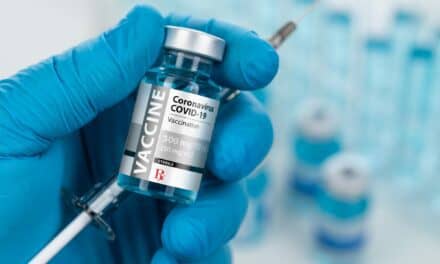Young adults (age 18-25) living with asthma need to be provided with the tools to self-manage their disease and reduce their risk of exacerbation and hospital admission.
Those with chronic illnesses such as asthma battle symptoms daily. The idea of well-controlled asthma can seem unobtainable, particularly in those who do not understand their disease process or comprehend the steps necessary for optimal management. As a result, collaboration between healthcare providers and patients must take place, including information on self-management.1 In fact, as will be evidenced, education is vital for appropriate asthma control.
The purpose of this evidence-based project was to examine the impact of self-management education on young adults living with asthma and how healthcare professionals can utilize this data to improve interactions with these individuals in the primary care setting. Moreover, this paper discusses how providers who employ such techniques are essential to helping decrease the risk of asthma exacerbation and thus minimizing the rate of hospital admissions in this specific patient population.
Accordingly, the data discovered through exploration of this topic resulted in the creation of a brochure, geared specifically toward the young adult with asthma. This informational brochure was made purposely for healthcare professionals in the primary care setting to aid not only in the enhancement of patient education but also in the goal of achieving suitable asthma control.
The Necessity for Asthma Education
In regard to chronic illnesses, asthma is considered one of the most common and also as one of the main reasons for emergency department visits and admission to the hospital setting each year.2 In fact, millions suffer from asthma, which affects their personal lives as well as their professional lives.3 As a result, the importance of fully assessing individuals with asthma cannot be overstated. Asthma control should be the cornerstone of therapy and needs to be evaluated not only at its baseline but at routine intervals, especially in the primary care setting.4 It is crucial for both patients and healthcare providers to continually assess their asthma control status.
Asthma treatment, at its core, should involve adequate control of the disease process.5 It must include an attempt to minimize airway inflammation and also an effort to prevent chronic lung changes.5 Self-management education is a necessity then as well as routine follow-up in the healthcare setting and routine monitoring of one’s lung function through pulmonary function testing (PFT) and/or peak expiratory flow (PEF).5
According to the National Asthma Education and Prevention Program (NAEPP) guidelines, or the Expert Panel Report-3 (EPR-3) from 2007, patient education is a vital component for appropriate asthma control.3 In fact, these guidelines strongly encourage self-management education for asthma and an assessment of each patient’s current level of education with every encounter with a healthcare provider, regardless of the setting.3 Furthermore, obtaining true asthma control is then possible through “avoidance of triggers, patient adherence to controller medication, and the patient’s ability to recognize asthma symptoms and respond appropriately.”1 Consequently, healthcare professionals must provide patients with detailed education on each of these areas as frequently as possible.6
As a result, the EPR-3 guidelines strongly recommend the institution of a written asthma action plan (WAAP) within asthma self-management education in order to obtain adequate asthma control.3 The WAAP helps incorporate the individual patient into the plan of care and addresses how to appropriately treat one’s asthma.3 It should be reviewed regularly and updated as necessary by both the patient and healthcare provider.7 These written plans function to help clients more fully comprehend the severity of their asthma and also what to do with increasing symptoms and/or an asthma exacerbation.7
Review of the Literature

For the purposes of this paper, a young adult is defined as 18-25 years of age. Most articles found tended to describe the young adult age group as 13-18 years old, but this age range also was defined in other articles as “adolescent” or “teenager.” Furthermore, some articles even defined adults as 12 years of age and older. In fact, not one article was found to focus on patients age 18-25 specifically during the review of current literature. Hence a gap in the literature was discovered concerning the young adult population.
Self-management is defined as being made up of three parts, specifically: self-assessment, self-adjustment, and self-treatment.3 It “requires a partnership between the patient and the physician or other healthcare professional who is trained in asthma diagnosis and management.”3 Education on self-management then, specifically asthma and self-assessment, includes teaching individuals to recognize possible warning signs of an impending asthma “attack” and also how to monitor PEF.3
Self-adjustment education then is directly tied to one’s ability to self-monitor and consists of the individual taking in the signs of a possible asthma exacerbation and/or decreasing PEF and acting upon it through a change in current behavior.3 Lastly, education on self-treatment focuses on the patient’s ability to properly administer the necessary medications as directed by a healthcare provider.3
Development of an Intervention Tool
With the discovery of a gap in the literature concerning asthma self-management education and young adults, the need for a tool geared specifically toward this population was established. In order to combine multiple facets of information pertaining to self-management education, we created an informational brochure, which was geared toward the young adult population (ie, individuals 18-25 years of age).
This particular brochure could be provided to primary care settings across the nation, including doctors’ offices, community health centers, urgent care centers, and even within the hospital setting. For example, such a brochure could be distributed to respiratory therapists or respiratory care departments, or nurse educators on a general medical-surgical floor, and aid in discussing asthma control with young adult inpatients suffering from this chronic illness.
Furthermore, the creation of this brochure was not only to provide vital education on self-management to young adults with asthma but also to stimulate discussion between them and healthcare providers about appropriate asthma control. For instance, these patients may not even know what a written asthma action plan is, or may not truly understand asthma exacerbation triggers and how to avoid them.
Accordingly, the brochure was generated as a tool to employ general knowledge and inspire further discussion between patient and provider, especially because this specific age group may not routinely visit a healthcare provider. The hope would then be for such individuals to establish with a primary care provider successful management of asthma and thereby improve their current quality of life.
Discussion
As previously discussed, the necessity of asthma self-management education in the healthcare setting cannot be overstated.
Research has shown how it is predominantly the duty of primary care providers to assess patients’ current understanding of asthma and self-management and to also build upon their knowledge base.7 Open communication between healthcare professional and patient is fundamental to achieving well-informed patients and, as a result, well-controlled asthma.7
Furthermore, young adults may not necessarily understand the chronic nature of their disease or how asthma is affecting their lives in a negative manner.4 The question then becomes, how can someone improve their quality of life if they do not even realize it is being negatively affected? Education is the key.
The healthcare community must be responsible for educating young adults suffering from asthma. Then and only then will we see decreased office and emergency department visits and hospital admissions for asthma exacerbations.7 Healthcare providers need to arm these individuals with the information and lifelong skills required for successful management of this chronic respiratory disease. This includes education on self-management as a whole (ie, self-assessment, self-adjustment, and self-treatment) and will allow these young adults the freedom to empower themselves, own their illness, and enhance their current quality of life.3
With that in mind, an educational brochure was created exclusively for young adults with asthma. Utilizing data from the Centers for Disease Control and Prevention (CDC), the National Heart, Lung, and Blood Institute (NHLBI), and Cleveland Clinic, the brochure consists of basic yet essential information on asthma and asthma control.
It outlines what asthma specifically is, as well as education on symptom triggers, how to control asthma (including a brief overview of an asthma action plan), and important online resources. Importantly, it assures young adults that they are not alone in their battle against this chronic disease and will hopefully encourage such individuals to seek out care—especially if they have not already done so.
Conclusion
In closing, asthma self-management education for young adults is imperative for adequate asthma control. Moreover, health providers, especially those in the primary care setting, must take every opportunity to educate the young adult population, as they may not necessarily seek out care until an actual asthma exacerbation takes place.3 Knowing the benefits that such education can have on these individuals—such as fewer days experiencing shortness of breath and wheezing, less exacerbations, and improved quality of life1—healthcare providers should push even further to make every day a “good day” for young adults living with asthma. RT
______________________________________________________________
Kaitlin M. Hilger, RN, BSN, OCN, is a registered nurse in the Pulmonology department at Lutheran Medical Group in Fort Wayne, Ind. Heather Krull, DNP, RN, FNP-BC, is a practicing nurse practitioner and graduate nursing professor, employed by Parkview First Care and Indiana University-Purdue University Fort Wayne, both located in Fort Wayne. For further information, contact [email protected].
______________________________________________________________
References
- 1. Jones MA. Asthma self-management patient education. Respir Care. 2008;53(6):778-786.
- 2. Arts YK. Evidence summary: Asthma: Self management education (adults). The Joanna Briggs Institute. 2013.
- 3. Pruitt B. Asthma self-management education programs: the key to good control. RT: For Decision Makers in Respiratory Care. 2011;24(5):14-17.
- 4. Yawn BP. The role of the primary care physician in helping adolescent and adult patients improve asthma control. Mayo Clin Proc. 2011;86(9):894-902.
- 5. Boulet LP. Asthma control, education, and the role of the respiratory therapist. Can J Respir Ther. 2011;47(4):15-21.
- 6. Yates C. Assessing asthma control: an evidence-based approach to improve skills and outcomes. Nurse Pract. 2013;38(6):40-47.
- 7. Holmes S, Scullion J. Better asthma control could avoid majority of hospital admissions. Guidelines in Practice. 2011;14(7):11-19.












